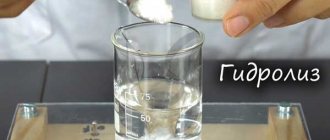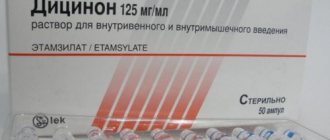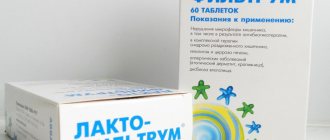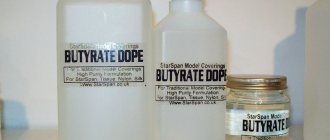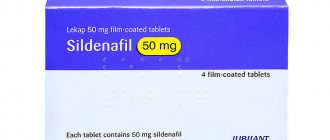Indications for use
Sodium chloride droppers are prescribed for the treatment of acute conditions, or for diluting various drugs for acute and chronic diseases.
Examples of using the medicine in conjunction with other drugs are as follows:
- with Diphenhydramine
(Diphenhydramine) – for urticaria, anaphylactic shock, and other allergic reactions; - with Drotaverine
– for renal colic; - with Pyridoxine
– for muscle pain, diseases of the nervous system; - with Lincomycin
- for pneumonia, abscesses, sepsis.
An isotonic solution is prescribed to adults and children with a lack of sodium in the body. This occurs more often with acute or chronic dehydration (for example, with intestinal infections, poisoning with diarrhea and vomiting).
Also, the indications for use of the solution are as follows:
- acidosis;
- overdose of hormonal agents, antibiotics and other drugs;
- acute heart failure;
- hypokalemia;
- maintaining the required volume of fluid during operations and after bleeding;
- burn disease.
During pregnancy, the drug is administered for severe toxicosis, for severe edema, as a detoxification method, for a sharp drop in blood pressure during childbirth, after a cesarean section.
Also, saline solution is often dripped in case of alcohol, drug intoxication, or in case of overdose of drugs for potency and weight loss (for example, Yohimbine).
A hypertonic solution (2-3%) copes well with pulmonary edema, cerebral edema, and is recommended for severe electrolyte imbalances and to stop increased urination. Wounds are washed with a stronger solution (10%) and enemas are given to cleanse the intestines.
When to use
Sodium chloride solution has been successfully used:
- at the time of surgery and after surgery to maintain plasma volume;
- when the body is dehydrated, which is caused by various diseases;
- for severe bleeding, severe burns and dispensation to maintain plasma volume;
- to reduce intoxication when a dangerous infection enters the body;
- for washing eyes during inflammatory and infectious processes, allergies and injuries;
- for rinsing the nose during colds;
- for inhalation for respiratory diseases;
- for dissolving different drugs when used together for injection.
Pharmacological action of Sodium chloride
The drug is aimed at restoring water balance and has a detoxifying effect. Due to the fact that the drug replenishes sodium deficiency, it is effective in various pathological conditions.
Sodium chloride 0.9% has the same osmotic pressure as human blood. For this reason, the drug is quickly eliminated from the body and increases the volume of circulating blood for a short period of time.
When applied externally, saline solution of sodium chloride can remove pus from the wound or restore the microflora.
If an intravenous infusion of sodium chloride solution is performed, the patient will increase urination and also replenish the lack of sodium and chlorine.
How is sodium chloride beneficial for the body?
Chlorinated sodium is present in blood plasma and tissue fluids of the human body. It is responsible for the stability of the osmotic pressure of intercellular fluid and blood. When there is a shortage of this substance, water leaves the vascular bed and passes into the interstitial fluid.
This provokes the following conditions:
- increased blood density;
- spasms of smooth, skeletal muscles;
- neurological pathologies;
- disorders of the cardiovascular system.
Infusion of saline solution returns the water-salt balance to normal, and also cleanses the body of toxins and breakdown products formed as a result of the activity of harmful bacteria.
External use of NaCl improves the secretion of pus, restores microflora, and destroys pathogenic microorganisms of various origins.
In addition, chlorinated sodium improves the absorption of medications. Patients are often placed on a drip with intravenous medications diluted with saline.
Sodium Chloride price, where to buy
The price of saline solution in ampoules of 5 ml is on average 30 rubles per 10 pcs. Buying sodium chloride 0.9% in a 200 ml bottle costs an average of 30-40 rubles per bottle.
Find the nearest pharmacies
- Online pharmacies in RussiaRussia
- Online pharmacies in UkraineUkraine
- Online pharmacies in KazakhstanKazakhstan
WER.RU
- Sodium chloride for injection, solution for infusion 0.9% 100 ml 20 pcs. Kelun-Kazfarm TOO
35 rub.
- Sodium chloride solvent 0.9% 10 ml 10 pcs. Dalkhimpharm
45 rub.
- Sodium chloride solution for infusion 0.9% 400 mlMospharm LLC
40 rub.
- Sodium chloride solvent 0.9% 5 ml 10 pcs. Grotex LLC
54 rub.
- Sodium chloride solution for infusion 0.9% 500 ml Gematek
42 rub.
Europharm* 4% discount using promo code medside11
- Sodium chloride solution for injection 0.9% 5 ml 10 ampEskom NPK OJSC
28.7 rub.
- Sodium chloride solution for infusion 0.9% 400 ml plastic LLC Grotex
35.7 rub.
- Sodium chloride solution for infusion 0.9% 500 ml 10 fl plastic b brownB.Brown Melsungen AG
282 rub.
- Sodium chloride solution for injection 0.9% 10 ml 10 ampPharmsintez
36.7 rub.
- Sodium chloride solution for infusion 0.9% 200 ml glass individual packagingMospharm LLC
27.9 rub.
Pharmacy Dialogue* discount 100 rub. using promo code medside (for orders over 1000 rubles)
- Sodium chloride (vial 0.9% 400ml)
34 rub.
- Sodium chloride (amp. 0.9% 10ml No. 10)
40 rub.
- Sodium chloride (amp. 0.9% 10ml No. 10)
23 rub.
- Sodium chloride (vial 0.9% 200ml (ind.pack))
53 rub.
- Sodium chloride (amp. 0.9% 5ml No. 10)
32 rub.
Pharmacy IFC
- Sodium chlorideBiosynthesis (Penza), Russia
21.50 rub.
- Sodium chloride Gematek LLC, Russia
382.00 rub.
- Sodium chlorideGrotex LLC, Russia
43.90 rub.
- Sodium chloride-BufusUpdate ZAO PFK, Russia
60.00 rub.
- Sodium chlorideGrotex LLC, Russia
55.90 rub.
show more
Pharmacy24
- Sodium chloride 0.9% 250ml (PVC) solution for infusion DP"Pharmatrade",Ukraine
13.77 UAH
- Sodium chloride 0.9% 400 ml solution package
11.25 UAH
- Sodium chloride-Darnitsa 9 mg/ml 200 ml solution PrAT" Pharmaceutical company "Darnitsa", Ukraine
13.25 UAH
- Sodium chloride 0.9% 3000 ml solution DP "Pharmatrade", Ukraine
69 UAH
- Sodium chloride 0.9% 100 ml PrAT "Infusion", Ukraine
12.95 UAH
PaniPharmacy
- Sodium chloride ampoule Sodium chloride solution d/in. 0.9% amp. 5ml No. 10 Ukraine, Darnitsa ChAO
15.31 UAH
- Sodium chloride infusion Sodium chloride solution inf. 0.9% 100ml Ukraine, Yuria-Pharm LLC
13.69 UAH
- Sodium chloride infusion Sodium chloride solution inf. 0.9% 200ml Ukraine, Yuria-Pharm LLC
15.12 UAH
- Sodium chloride infusion Sodium chloride solution 0.9% 200ml plastic pack. Ukraine, Pharmatrade DP
10.38 UAH
- Sodium chloride infusion Sodium chloride solution 0.9% 500ml Ukraine, Pharmatrade DP
19.84 UAH
show more
BIOSPHERE
- Sodium chloride 0.9%/10 ml No. 10 solution d/in.amp.Novosibkhimpharm OJSC (Russia)
610 tenge.
- Sodium chloride 0.9% 200 ml solution for inf. bottle. Kelun-Kazfarm TOO (Kazakhstan)
170 tenge.
- Sodium chloride 0.9% 500 ml solution for inf. bottle. Huashidan AK (China)
230 tenge.
- Sodium chloride 0.9% 400 ml solution for inf. Biosynthesis (Russia)
260 tenge.
- Sodium chloride-Darnitsa 0.9%/5 ml No. 10 solution d/in.amp.Darnitsa (Ukraine)
260 tenge.
Composition and price of sodium chloride
Sodium chloride solution, or saline, is a colorless, salty liquid that has no distinct odor. There are 2 types of saline solution with different concentrations of NaCl: 0.9% isotonic, and 10% hypertonic.
Composition of the product per 1 liter:
| Sodium chloride | Distilled water | |
| Isotonic solution | 9 g | 1 l |
| Hypertonic solution | 100 g |
There are several forms of saline solution:
- ampoules of 1, 5, 10, 20 ml;
- bottles of 50, 100, 200, 250, 400, 500, 100 ml;
- packages of 250, 500, 1000 ml.
Storage conditions for sodium chloride: store in a dry place, out of reach of children and pets, at a temperature of +18 to +25 degrees. The shelf life of the product is 5 years.
The cost of the solution depends on the form of release, volume and manufacturer. Average prices are:
- In ampoules: 30-325 rubles.
- In bottles and bags: 25-60 rubles.
- Hypertonic saline: 80-220 rubles.
The drug is dispensed from pharmacies according to the prescription of the attending physician.
Contraindications for use
A sodium chloride drip will not be prescribed to patients if there are absolute and relative contraindications, namely:
if the patient has any form and localization of edema (lungs, brain, generalized); if the patient has heart and kidney failure; with high levels of sodium and chlorine in the blood according to laboratory tests; when using glucocorticosteroids; people suffering from hypertension (NaCl can increase blood pressure); people suffering from diabetes (especially during hypoglycemic crises); for oncological diseases; with excess fluid outside the cell and lack of fluid inside the cell; pregnant women (with caution!)
Neglecting contraindications can worsen the clinical picture of the patient’s acute pathological condition.
Indications for use
Sodium chloride (dropper) is prescribed in many cases, both for severe pathologies for therapeutic purposes, and for preventive purposes in healthy people.
If there is a lack of sodium chloride in the body due to uncontrollable vomiting, diarrhea, sweating, mechanical or dynamic intestinal obstruction, saline solution will be the first on the list of first aid medications. Purpose: to restore lost reserves of inorganic substances in the body, as well as to prevent blood clots due to blood thickening.
Antibiotics and other powder forms of drugs without dilution with NaCl are not administered. Sodium chloride is a good solvent. Medicines dissolved in physiological solution gain the ability to penetrate into any tissues and organs and freely reach target cells. Thus, NaCl increases the effectiveness of the main drug.
Removing a patient from shock states in many cases begins with intravenous administration of saline, both in its pure form and in combination with fast-acting medications. First, NaCl is administered in a stream (quickly), and later - in a drip, as support and stabilization.
External use of sodium chloride is also effective for washing purulent wounds, the surgical field, and the oral cavity. The positive side of an isotonic solution in the dressing room is its sterility.
In case of alcohol intoxication, saline solution plays an important role in detoxification therapy.
Indications for use
As already mentioned, sodium chloride is used quite widely in medicine.
Saline:
- Helps restore water-salt balance in case of dehydration caused by any reason.
- Intravenous administration of sodium chloride allows you to maintain the necessary balance of blood plasma during and after surgery.
- The product can be used for detoxification purposes for intestinal infections, dysentery, and food poisoning.
- Saline solution has plasma-substituting properties, so it is often used to maintain plasma volume in cases of severe blood loss, diabetic coma, burns, and diarrhea.
- The solution can be used as an eye wash for corneal irritation caused by allergies or inflammation.
- It is also recommended to use saline solution for rinsing the nasal cavity in case of acute respiratory pathologies, after removal of polyps, adenoids, in order to prevent the development of sinusitis, in case of rhinopharyngitis, runny nose of allergic origin.
- In combination with other medications or without them, the solution can be used for inhalation of the respiratory tract.
- Due to its neutral environment, saline is an ideal means of dissolving other drugs for subsequent injection or infusion.
- For wetting gauze dressings, bandages, treating wound surfaces.
pharmachologic effect
Sodium chloride is used as a detoxification, rehydration and plasma replacement agent. Its use is accompanied by the following effects:
- normalization of water and salt balance;
- replenishment of Na and Cl deficiency;
- temporary increase in blood volume;
- increased urine output to cleanse the body.
Due to the improvement in the bioavailability of most drugs, saline solution is used in medicine as a means for diluting injection and infusion drugs.
It is incompatible or poorly compatible with the following medications:
- norepinephrine;
- corticosteroids;
- leukopoiesis stimulator Filgrastim;
- antibiotic Polymyxin B.
In case of arterial hypertension, sodium chloride should not be combined with Enapril and Spirapril: the use of saline solution reduces the hypotensive effect of these drugs.
The saline solution has an osmotic pressure similar to the human blood environment, and therefore is quickly eliminated from the body. Already 1 hour after using the dropper, less than half of the product remains in the body.
What examinations need to be completed
Sodium chloride (dropper) is prescribed after the patient is examined by the attending physician for the presence of edema, increased moisture in the skin, and shortness of breath. The next step in the diagnosis will be to question the patient for a history of chronic diseases and heart or kidney failure.
In the absence of visual signs and complaints, the patient is referred for laboratory diagnostics (clinical and biochemical blood test to exclude anemia, increased levels of blood ions - potassium, sodium, chlorine; urine test - determination of density, specific gravity, presence of ions at the outlet).
Next, instrumental diagnostics are performed (ultrasound diagnostics of the heart, pelvic and abdominal organs, chest radiography). After carrying out diagnostic measures, the doctor analyzes the results and gives permission to carry out the manipulation.
All examinations at the clinic are free of charge. If the patient wants to speed up the process of instrumental or laboratory examination, you can contact private medical organizations. The cost of ultrasound diagnostics is 1500-3000 rubles. Laboratory research – 700-1200 rubles.
Instructions for use
The dosage of the drug and the drugs that are diluted with it is determined only by the doctor. This is done based on age, weight, and existing disease. The drip is performed in a medical facility, or, if indicated, at home (only under the supervision of a healthcare professional). If you need to administer saline in courses, you need regular monitoring of electrolyte levels.
Typically the dosage per day is as follows:
- children - 20-100 ml/kg body weight;
- adults - 1500 ml for three procedures;
- in severe cases - up to 3 liters for 3-5 procedures;
- in case of acute lack of electrolytes - 100 ml once, then as indicated.
To dilute the drug, 50-200 ml of saline solution is usually used. The rate of intravenous drip administration is determined by the instructions for the drug. Before use, sodium chloride is heated to 37-38 degrees
. The course of therapy is determined by the underlying disease.
In folk medicine, the drug is used for facial peeling with calcium chloride (calcium hydrochloride). The tablets should be diluted with saline solution (1:2) and applied to a cleansed face. After drying, massage your face and rinse off the pellets with water. If your skin is problematic, you can additionally add one capsule of Doxycycline to the peeling.
What is sodium chloride prescribed for?
Saline sodium chloride solution is perhaps the most universal remedy.
Droppers with sodium chloride are used in any complex therapy.
The drug is dripped intravenously for:
- Rapid replenishment of blood volume.
- Urgent restoration of the activity of internal organs in a state of shock.
- Saturation of organs with vital ions.
- Stopping the processes of intoxication and relieving symptoms of poisoning.
In these conditions, urgent use of sodium chloride in droppers is most often prescribed:
- Diarrhea.
- Vomiting.
- Dyspepsia.
- In the presence of extensive burns.
- With cholera.
- When the body is dehydrated.
During pregnancy
Sodium chloride is used to treat severe pathologies in pregnant women.
The saline solution is absolutely harmless to both the woman’s body and the developing fetus.
Typically, sodium chlorine is needed during therapy for pregnant women to dilute medications for a single infusion of up to 400 ml.
If it is necessary to restore blood levels, the amount of saline is increased to 1400 ml.
Sodium chloride is also used for pregnant women:
- In case of severe toxicosis, the saline solution is additionally saturated with vitamins.
- With gestosis.
- During detoxification.
- In the process of complicated childbirth occurring at low blood pressure.
- During cesarean section for women suffering from hypotension.
- To saturate organs with chlorides and vitamins.
The use of saline solution after childbirth during lactation is allowed.
Sodium chloride solution also has contraindications during pregnancy. It should not be used by a pregnant woman:
- With excessive hyperhydration.
- With heart failure.
- During treatment with corticosteroids.
- With pathologies of intracellular fluid circulation.
- With a diagnosed lack of potassium with a simultaneous excess of sodium and chlorine in the body.
For alcohol intoxication
In case of severe poisoning with ethyl alcohol, a person requires qualified medical care, which includes therapeutic measures, as well as droppers with saline sodium chloride solution.
It is the droppers that relieve the symptoms of alcohol withdrawal.
Other drugs, such as tablets or suspensions, are usually ineffective, since they are difficult to take due to frequent vomiting.
And the medicine, poured into a vein through a dropper, enters the blood instantly and immediately begins to work.
NaCl combines well with many medications.
A saline solution of sodium chloride can be used to dilute several necessary medications at the same time: vitamins, sedatives, glucose, etc.
When diluting, it is imperative to check compatibility visually, paying attention to whether a precipitate has appeared during the mixing process or whether the color has changed. Therapy for severe alcohol intoxication is carried out as follows:
Therapy for severe alcohol intoxication is carried out as follows:
- The doctor examines the patient, assessing the severity of his condition.
- Blood pressure and pulse are measured and an ECG is performed.
- The doctor prescribes medications that must be added to the saline solution for administration.
- Droppers are used for 3-4 days.
Sodium chloride - what is it?
Therapeutic saline solution is considered an excellent conductor of electricity. Thanks to it, the water-electrolyte and alkaline balance is maintained.
The preparation of saline solution is quite simple - add table salt little by little to distilled water until the required concentration is obtained. The main thing is to introduce the salt in portions so that it completely dissolves, so that a precipitate does not form.
In some cases, the body may not have enough sodium chloride. Its deficiency can be caused by:
- frequent vomiting;
- severe burn;
- large loss of fluid;
- gastrointestinal tract infection;
- cholera;
- hyponatremia.
Saline solution: instructions for use for a dropper
The following are indications for use:
- Most often, sterile saline is used to administer intravenous drip to the patient;
- Before the procedure for administering the medication begins, it should be warmed to room temperature in advance;
- The volume of medication to be administered orally should be calculated based on the severity of the condition, the volume of fluid lost, the age and weight of the patient;
- The average daily dose of sodium chloride infusion is 500 milliliters. This amount allows you to completely restore the daily volume of water and electrolyte balance. In more complex cases of intoxication and dehydration, the patient can receive up to 3000 ml during the day;
- The optimal rate of administration of the drug is 540 milliliters of solution per hour;
- If the condition is severe, a decision may be made to increase the speed of the drip to 70 drops per minute;
- For pediatric patients, the dosage of the amount of solution will be calculated based on the ratio of the patient’s age and his weight. There is a special formula for this. In most cases, these volumes range from 5 or 10 to 100 ml. If taking the solution for a long time is indicated, the doctor must prescribe a general analysis of urine and blood plasma to monitor the level of electrolytes in the body;
- When the solution performs auxiliary dilution of drugs with other drugs, its dosage varies, usually from 50 to 250 milliliters. It must be diluted by stirring thoroughly. The drugs are diluted in a sterile room;
- Hypertonic solution should not be used so often; it is prescribed exclusively as an intravenous route. The volume of infused solution depends on the severity of the condition and the needs of the patient’s body. The daily dosage is 10 – 30 milliliters;
- If the patient urgently needs to quickly replenish the presence of chlorine and sodium ions in the body, 100 ml of isotonic solution of sodium chloride is dripped into him;
- In practice, the use of saline solution for enemas is very common. They alleviate the patient’s condition with increased intracranial pressure, when swelling of various origins occurs, hypertension, and also when colon erosion occurs;
- If the patient has festering wounds, various kinds of abscesses and boils, the doctor will most likely prescribe compresses using sodium chloride;
- Both isotonic and hypertonic saline solutions can be actively taken to rinse mucus or pus from the sinuses. In pharmacies you can find a type of medicine produced in the form of a spray for convenient use. You can also use a regular medical pipette to rinse your nose, instilling 2 drops of the solution into each nostril several times a day (up to 10 drops per nostril);
- At the first symptoms of colds and upper respiratory tract diseases, the use of inhalations of this solution is a very effective means of combating colds in the early stages.
As you can see, the instructions for using sodium chloride are quite complex
It is very important to observe all its proportions and dosage sizes, otherwise it may cause side effects
Methods of application
Subcutaneous and intravenous administration
In medicine it is now difficult to do without the use of saline solution. It is necessary when administering medications by drip and injection, since any concentrated and powdered drug must be dissolved in saline before use.
It also allows you to preserve plasma volume and maintain water-salt balance. Effective during poisoning, severe swelling, for diluting thick blood.
The solution is most often introduced into the body through an IV or subcutaneous injection. Before administration, you need to warm the solution to 36-38 degrees.
When injecting, it is worth taking into account the characteristics of the patient’s body, his age, weight, amount of lost fluid and missing sodium and chlorine.
The average person needs 500 ml of sodium per day. This is the volume that needs to be entered. If a lot of fluid is lost or severe intoxication is noted, then you can increase it to 3000 ml per day.
For a 1 kg child you need 20-80 ml.
Only a sterile solution is suitable for subcutaneous and intravenous administration.
For rinsing the nasopharynx
Saline solution is considered an inexpensive remedy that is very effective. Sodium chloride helps flush the nasopharynx during colds. After the first use, you can notice a significant improvement in your condition, your nose is cleared of mucus and your runny nose disappears. Washing can be done for allergic rhinitis, to prevent inflammatory processes.
The product is allowed to be used by pregnant and breastfeeding women. It can also be given to infants when taking other medications could be harmful.
The advantage of the solution is that after use the nasal mucosa does not dry out or become injured. You can rinse the nasopharynx several times a day; there are no restrictions on the frequency of use.
The solution can be easily prepared independently at home. To do this you need about 10 g of table salt and 1 liter of boiled water. Strain the solution through cheesecloth and drip it into your nose. It is non-sterile and can be given to children from 3 years old.
To cleanse the stomach and intestines
The solution is effective for severe poisoning. It is used for rectal enemas to stimulate bowel movements. In this case, you will need 3 liters of 9% solution per day. Before use, you need to warm the solution to 36-37 degrees so as not to cause intestinal irritation. An unsterilized solution will do.
It is also used for food poisoning for gastric lavage. Sodium chloride solution is drunk in small sips, after which you need to induce vomiting yourself. For this you only need a sterile solution.
Contraindications for intravenous administration
Infusion of saline solution is prohibited for the following pathologies:
- swelling of the lungs and brain;
- pathologies of the kidneys and heart muscle;
- abundance of Na and Cl, lack of K in the body;
- extracellular hyperhydration;
- dehydration inside the cell;
- taking large doses of corticosteroid drugs.
Sodium chloride should only be used as directed by a physician.
A dropper with saline solution is a quick and effective way to replenish blood volume in the body, restore water-salt balance, and cleanse toxins. To prevent the product from causing a negative reaction, it should be used exclusively under the supervision of a physician.
A hot injection of sodium chloride for hemorrhoids helps to increase blood flow, which prevents congestion in the veins. Injections also stimulate regeneration processes in damaged areas and relieve inflammation.
Composition and action
The active ingredient is sodium chloride. When administered intravenously, it affects many body systems. Injections normalize the water-salt balance and produce a diuretic effect. This anti-inflammatory drug is used in the treatment of allergic reactions and dehydration.
Hot injections are prescribed for intoxication, purulent wounds, bleeding from hemorrhoids, conjunctivitis and low sodium ion content.
Why is saline solution prescribed?
Saline solution is administered intravenously in the form of infusions when indicated:
- Severe and critical dehydration of the body, disturbance of water-salt balance.
- Reduced plasma volume with large blood losses, dyspepsia, severe burns, diabetic coma.
- Carrying out surgical procedures, postoperative period.
- Intoxication of the body due to infections and poisonings of various origins.
- Epigastric, ileocecal, pulmonary bleeding.
- Digestive pathologies: nausea, vomiting, diarrhea, chronic and acute constipation.
- Lack of Na and Cl in the body.
When introducing droppers of saline solution with additional components, the list of indications expands.
Side properties
With a short-term one-time use of sodium saline solution, there are practically no negative consequences on the body, but if you need to use the drug for a long time, unpleasant side effects may occur, namely:
- A common side effect of saline solution is the occurrence of malaise, weakness and increased sweating, and cases of headache and dizziness are not uncommon;
- Nausea, vomiting, diarrhea appear and unpleasant spasms in the gastrointestinal tract are possible;
- In women, disruptions of the menstrual cycle, dysmenorrhea and delays are possible;
- From the cardiology side, the patient may experience a strong increase in pulse, and as a result, rapid heartbeat, arrhythmia and a possible increase in blood pressure;
- The skin cannot withstand NaCl for a long time. In this case, it will give a negative response in the form of dermatitis;
- Due to prolonged plasma dilution, complications such as anemia or hypokalemia are possible;
- The appearance of edema in different parts of the body, as well as an increase in the acidity of the body, indicate the occurrence of side effects.
It is precisely because of the possible development of side effects that there are contraindications for long-term use. Injections of the solution are recommended to be carried out exclusively under the supervision of a specialist who will quickly be able to notice any of them, stop administering the drug if it is harmful to the patient and help to competently eliminate any complications that arise.
Side effects
Rare negative effects that occur with prolonged or heavy use of sodium chloride include:
- In neurology: anxiety, severe headaches, dizziness, increased sweating, weakness, constant feeling of thirst.
- In gastroenterology: stomach cramps, diarrhea, nausea and vomiting.
- In gynecology: failures in the circulatory system, delays, dysmenorrhea.
- In cardiology: increased heart rate, arrhythmia, high blood pressure.
- In dermatology: dermatitis, acne.
- In hematology: anemia, hypokalemia.
- In endocrinology: increased acidity of the body, edema.
If such complications occur, the administration of saline solution is stopped, and the patient is given assistance to eliminate the side effects.
Why is sodium chloride given intravenously?
Physiological saline liquid as an inert drug is the most universal remedy of modern medicine. Droppers with sodium chloride are part of almost every complex therapy. As an intravenous infusion, this agent is used for:
- Accelerated replenishment of lost blood volume.
- Restoration of normal microcirculation of internal organs observed in a person in shock.
- Complete saturation of the body with vital ions.
- Relief of intoxication processes that occur during poisoning of any kind and type.
But the most common use for which a sodium chloride dropper is used constantly and daily is to relieve symptoms of poisoning. This type of therapy is especially relevant when the harm from toxic substances is very high.
What is saline solution used for?
Saline and pregnancy
Due to its unique and universal composition, sodium chloride can also be used in the treatment of pregnant women. Due to its identity with the natural composition of blood, such a substance does not harm the developing fetus and the body of the expectant mother at all.
How exactly is the dropper used, and why is NaCl used in the case of pregnant women? More often, medications intended for a single infusion of a dose of up to 400 ml are diluted with this drug.
Sodium chloride solution is also used in the following cases:
- with severe toxicosis;
- to relieve severe swelling;
- when carrying out detoxification methods;
- during complicated childbirth taking place at low blood pressure;
- to saturate internal organs with the necessary chlorides and vitamins;
- during caesarean section, which is necessary for women suffering from arterial hypotension.
Drip administration of plasma replacement fluid is also permitted during the lactation period. Such therapy is carried out only as prescribed by a doctor and after all tests have been performed. Preliminary research is necessary, because for all its harmlessness, sodium chloride solution also has contraindications. It should not be used if a pregnant woman:
- when observing excessive hyperhydration;
- in case of observed heart failure;
- if a woman has to take corticosteroids;
- in case of severe disturbances in the circulation of intracellular fluid;
- A deficiency of potassium in the body with a simultaneous excess of sodium and chlorine was diagnosed.
Droppers for alcohol intoxication
Ethyl alcohol poisoning manifests itself and progresses individually in each person. For some, this is a state of mild malaise, while others require specialized medical care. Doctors are required to include drips with saline in therapeutic measures.
In this case, droppers become the most effective ways to relieve symptoms of alcohol withdrawal. Various other suspensions, tablets and mixtures become ineffective for the following reasons:
- The main symptom of this condition is vomiting. Sometimes it can be so strong that a person is unable to take the pill. Drugs taken orally become ineffective, unlike droppers.
- Thanks to intravenous infusion, the necessary medicine instantly enters the bloodstream, which makes the treatment measures more successful.
- The use of saline is unique. With its help, you can dilute and introduce into the body several necessary medications at once: sedatives, vitamins, saline solutions, glucose, etc.
Initially, the doctor examines the patient and assesses the severity of his condition. Based on the data obtained after an ECG, blood pressure and pulse measurements, doctors prescribe drugs that will be added to the physiological fluid.
Drip infusion when returning a person to life in case of alcohol intoxication is carried out within 3-4 days. Thanks to the creation of this unique substance - sodium chloride, doctors were able to save many frivolous lives affected by excessive drinking.
Sodium chloride is not only the well-known table salt dissolved in distilled water, but also a universal remedy known as saline solution or simply saline solution. In medicine, saline solution is used as a 0.9% NaCl solution (sodium chloride for infusion).
What is a hot injection of sodium chloride prescribed for?
The use of chloride injections makes it possible to speed up the healing process for a number of diseases. The solution is prescribed for pathologies accompanied by inflammation, as well as to replenish fluid loss in the body.
For hemorrhoids
When hemorrhoids become inflamed, hot injections into a vein help relieve bleeding. The process of restoration of the damaged area is accelerated, cracks heal, and the intensity of pain symptoms decreases.
The solution is injected into the vein very carefully. It is preheated slightly to 36-38°C. Sodium chloride is administered dropwise, sometimes adding a little magnesia.
Warnings for sodium chloride while breastfeeding
According to the US Food and Drug Administration (FDA), it is not known whether sodium chloride passes into breast milk and if it could harm a nursing baby. It is not recommended to take this medicine without first consulting a doctor if you are breastfeeding, since there is no clear exception for the occurrence of negative effects in the newborn.
Sources
Pharmacokinetics and placental transfer of magnesium sulfate in pregnant women / NIH (English)
Preeclampsia / PubMed (English)
Sodium Chloride Injection Solution / Drugs.com
Sodium chloride (flush) / Drugs.com (English)
Hydration status of pregnant women in West Jakarta / National Library of Medicine (English)
Sodium chloride / State register of medicinal products of Ukraine
During pregnancy
One of the common complications during pregnancy among women, especially in the early stages, is toxicosis. He seriously exhausts the woman with constant vomiting. If the state of toxicosis from a mild stage develops into a more complex form, the expectant mother is sent to the hospital for examination and relief of the condition.
A dropper with saline solution during pregnancy
Saline solution is administered intravenously into the body. It is safe for both the mother and the unborn child, which is why it is used almost everywhere. With its help, in combination with medications, electrolyte balance is restored. The body is saturated with minerals and vitamins.
NaCl is prescribed to pregnant women as a “placebo”, since pregnancy is a serious stress for the body and nervous system as a whole. Being under the supervision of a doctor and receiving a drip with saline solution, the woman calms down, and the nervous system gets the opportunity to relax and receive additional treatment. This reduces the likelihood of premature termination of pregnancy.
Indications for use
Sodium chloride droppers are prescribed for the treatment of acute conditions, or for diluting various drugs for acute and chronic diseases.
Examples of using the medicine in conjunction with other drugs are as follows:
- with Diphenhydramine
(Diphenhydramine) - for urticaria, anaphylactic shock, and other allergic reactions; - with Drotaverine
- for renal colic; - with Pyridoxine
- for muscle pain, diseases of the nervous system; - with Lincomycin
- for pneumonia, abscesses, sepsis.
An isotonic solution is prescribed to adults and children with a lack of sodium in the body. This occurs more often with acute or chronic dehydration (for example, with intestinal infections, poisoning with diarrhea and vomiting).
Also, the indications for use of the solution are as follows:
- acidosis;
- overdose of hormonal agents, antibiotics and other drugs;
- acute heart failure;
- hypokalemia;
- maintaining the required volume of fluid during operations and after bleeding;
- burn disease.
During pregnancy, the drug is administered for severe toxicosis, for severe edema, as a detoxification method, for a sharp drop in blood pressure during childbirth, after a cesarean section.
Also, saline solution is often dripped in case of alcohol, drug intoxication, or in case of overdose of drugs for potency and weight loss (for example, Yohimbine).
A hypertonic solution (2-3%) copes well with pulmonary edema, cerebral edema, and is recommended for severe electrolyte imbalances and to stop increased urination. Wounds are washed with a stronger solution (10%) and enemas are given to cleanse the intestines.
https://youtube.com/watch?v=MpJWEnagMFk
For alcohol intoxication
Alcohol intoxication is a common form of body poisoning. In some cases, its harm can be extremely severe. Without quick help, the patient may face coma or even death. Devices are used to relieve symptoms of poisoning and remove toxins from the body.
The main signs of alcohol intoxication:
- Increased weakness throughout the body;
- Severe dizziness;
- Nausea leading to vomiting;
- Strong headache;
- Fuzzy, confused consciousness;
- Cardiopalmus;
- Increased pressure.
For intravenous infusions of NaCl 0.9 percent, droppers with saline are prescribed at regular intervals. This allows you to saturate the body with substances and weaken the effects of toxins.
Saline solution Sodium chloride for droppers in combination with a medicine selected depending on the severity of the patient’s condition helps eliminate poisoning of the body with ethyl alcohol and its metabolites. This occurs due to blood thinning, which significantly reduces the severity of withdrawal symptoms.
Summing up about the IV
The use of any medicine has two sides. On the one hand, they help us recover from existing diseases, but on the other hand, the chemical elements that make up any medicine have a detrimental effect on other healthy organs. First of all, these are the liver and kidneys. They are responsible for processing the chemical elements that make up the bulk of all drugs.
When taking a drip, a serious load is placed on the kidneys, as they are responsible for removing toxins from the body. Therefore, after any course of medical therapy, it is necessary to undergo a rehabilitation course to restore the normal functioning of all organs. Take care of yourself and be mindful of what you eat.
https://youtube.com/watch?v=MpJWEnagMFk

